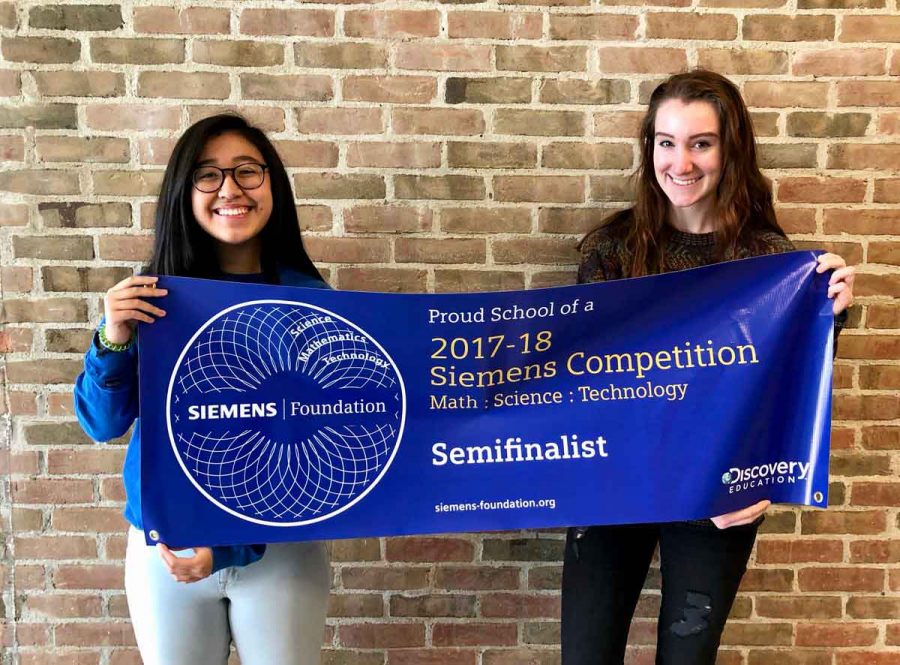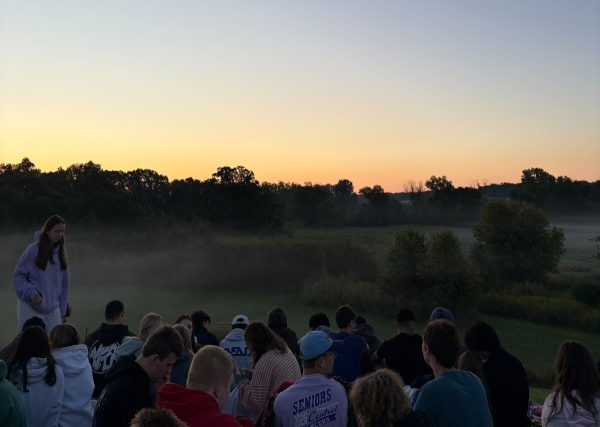BC seniors named Siemens Competition semifinalists
Laurel Chen (‘18) and Reilly Olinger (‘18) proudly show off their achievement. The Siemens Foundation holds the competition annually and this year, only about 500 projects out of the 2,000 entries were nominated as semifinalists.
Seniors Reilly Olinger and Laurel Chen were named semifinalists in the Siemens Math, Science, and Technology competition in mid-October. Established by the Siemens Foundation in 1999, the nation-wide competition encourages high school students to conduct experimental research in teams up to three. Judges grade the projects based on their quality, originality, and scientific importance. Of the 1600 projects entered this year, only the top twenty percent advanced as semifinalists. This year was the first time Olinger and Chen competed in the Siemens competition. I sat down with them to find out a bit more about their success.
Q: How did you feel when you received this award?
R: “We were really happy to get this award. In the days before the results were announced, it was nerve-wracking because we knew how many talented people had submitted their research papers and we knew how few projects were going to be picked – only 3 people in the state of Wisconsin qualified and 2/3 of them were Laurel and I. A lot of the people we’ve met through science fairs over the years congratulated us and we felt pretty good.”
L: “To be honest it was quite surreal at first because this was our first national science competition that we’ve ever entered that was very research-paper based. All in all, we were super stoked to know that our efforts were not put to waste.”
Q: What was your project on? Have you done similar projects in the past?
L: “We’ve done projects in the same general category (environmental science) through our school’s ISEF Research Club but we decided to step out of our comfort zone and try out environmental engineering this year.”
R: “Our project title was, “A Decentralized Approach to Contaminated Water Treatment with in situ Flocculation and Focus on Solar-power: Removal of Cyanobacterial Pollutants via Electrocoagulation-Sand Filtration.” It’s less complicated than it sounds. Basically we created a system for water filtration that utilized a cathode and an anode to charge particulate matter in solution so that it would “floc” together. This process is powered by solar energy making it more environmentally efficient. The idea was to make it possible for people – especially in third world countries – to remove toxic bacteria from drinking water.”
Q: What were some challenges that you faced during your project?
R: “I once started my sweater on fire because I didn’t wire our mechanism properly. It was a pretty terrifying moment, but thankfully most challenges we faced during our experiment weren’t that life threatening.”
L: “I also had to deal with Reilly’s horrible puns, too. Finding mentors and reducing the “gap” between high schoolers and college graduate students, or high school and collegiate research was a struggle too. It’s probably the biggest issue that high school researchers have to deal with besides coming up with a project idea because high schoolers are “too young” or are “a liability problem” — of course, this is normal. I think out of the 20 some different mentors we called in regards to our projects (finding lab space, asking questions about our project in general, borrowing materials, etc.), only 4-5 of them replied.”
Q: Would you recommend this competition to other students? What advice would you give to interested students?
R: “Yes, we would recommend it! Doing experiments has been really fun and really rewarding. We’ve got to travel so many places and meet so many people (not to mention it looks good on a resume).”
Olinger and Chen plan to participate in the Siemens Competition again next year.





